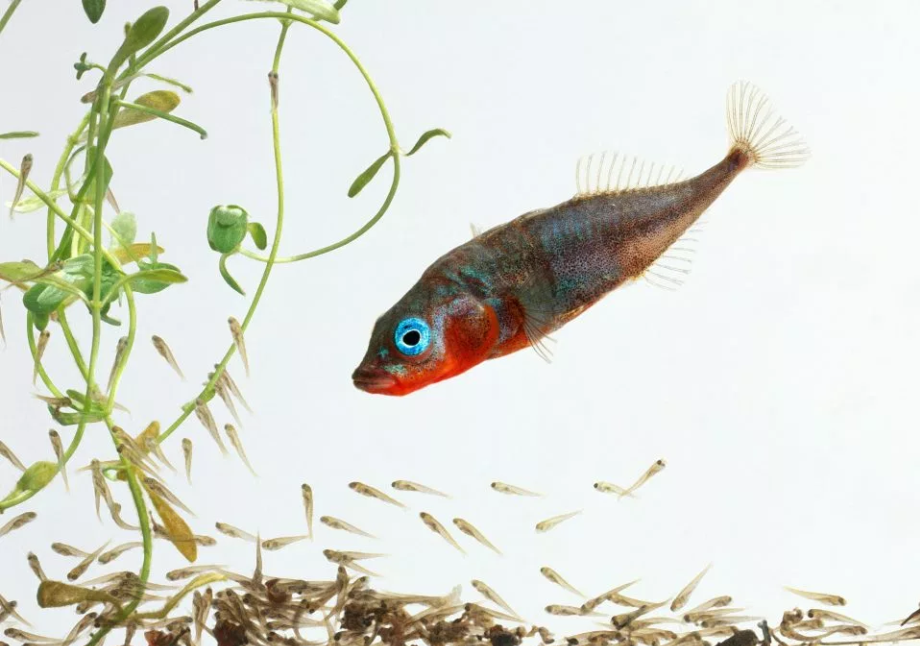World’s First Fish-Themed Virtual Reality Game Has a Computer-Programmed Fish Immersed into a Pond Full of Predators
Scientists in Britain have developed a fish-themed virtual reality game that immerses a computer-programmed fish prey inside an aquarium that is filled with real predators. This computer game for fish goes on a quest to show how aquatic predators choose their prey.
The researchers have used immersive technology to demonstrate that preys at the front of the shoal usually don’t stand a chance as predators tend to choose them first. The scientists developed this complex fish-friendly virtual reality game that projects a group of virtual fish, representing a shoal, onto a 2D surface in one end of a predator-filled aquarium tank. It’s more of a mixed reality game that projects virtual images of preys and the real fish predators are tricked into attacking the virtual prey.

The study by Bristol and Oxford University researchers found that the fish that were at the front of the shoal were targeted first by the predators. It is as simple as that. Those at the head are the most vulnerable. The virtual prey was developed to mimic the characteristic of some of the fish preys such as Daphnia that are usually the prey. The mixed reality rendering was so realistic that the real predators inside the aquarium could not resist attacking the virtual “prey”.
According to behavioral scientists, predators target based on the social position. The group leaders of a particular species are usually the most vulnerable to predation. However, this mixed reality experiment provided the first empirical proof of the phenomenon.
The virtual prey provided the behavioral scientists with a very realistic simulation of a real fish. The appearance and behavior of the virtual fish was very precisely programmed to mimic that of the real prey.
This precise programming helped the researchers overcome various limitations of the erstwhile observational studies on animal behavior where the variations in the position of the prey within the group was virtually impossible to isolate from other characteristics in the prey-such as differences in their position within the group- that could have influenced the prey’s risk of being attacked by predators. The mixed reality enabled the researchers to have a very precisely controlled experiment.
The study was also able to unveil a “hierarchy of risk” which isolated the individual prey that were even more likely to be attacked than the leading social group at the front. They found that predator attacks were timed to coincide with instances when a solitary prey had separated from the group. The study concluded that the leaders were more likely to reduce the risk of predation by keeping the followers in the shoal closely behind them.
The results of the study were published in the Journal Proceedings of the National Academy of Sciences (PNAS) of the US.
The study concluded that the predators attacked prey in the shoal based on the social position. The prey that was leading from the front was at the highest risk of being attacked while the predators spared the followers that were at a safer distance in the centre of the shoal. This is the first time that immersive technologies have been used to model and gain insights into animal behavior and it is something we are likely to see more of in the future where researchers combine real animals with immersive technologies in complex behavioral experiments.
https://virtualrealitytimes.com/2019/04/18/worlds-first-fish-themed-virtual-reality-game-has-a-computer-programmed-fish-immersed-into-a-pond-full-of-predators/https://virtualrealitytimes.com/wp-content/uploads/2019/04/Virtual-reality-game-fish-600x421.pnghttps://virtualrealitytimes.com/wp-content/uploads/2019/04/Virtual-reality-game-fish-150x90.pngEducationScientists in Britain have developed a fish-themed virtual reality game that immerses a computer-programmed fish prey inside an aquarium that is filled with real predators. This computer game for fish goes on a quest to show how aquatic predators choose their prey. The researchers have used immersive technology to demonstrate...Sam OchanjiSam Ochanji[email protected]EditorVirtual Reality Times - Metaverse & VR

